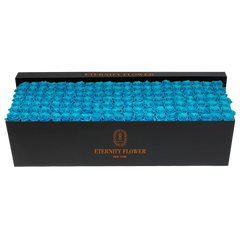As cat owners and plant lovers, it's crucial to be aware of which flowers can be harmful to our feline friends. Cats are naturally curious creatures, and they often explore their environment by nibbling on plants. This article aims to educate cat owners about poisonous flowers for cats, ensuring a safe and harmonious environment for both pets and plants.
Read more: Are Roses Toxic to Cats? Crucial Facts for Cat Owners
Common Poisonous Flowers for Cats

Many popular garden flowers, though beautiful, can be dangerous to cats. Some of these include lilies, tulips, daffodils, and chrysanthemums. It's essential to recognize these plants and understand the risks they pose to cats. Here are more details about some common garden flowers that are hazardous to cats, including which parts of the plant are toxic and why they are dangerous:
- Lilies: All parts of lilies, including petals, leaves, pollen, and even water from the vase, are highly toxic to cats. Ingestion can lead to severe kidney damage or failure. Even small amounts can be life-threatening.
- Tulips: The bulbs of tulips are the most toxic part to cats. They contain allergenic lactones which, if ingested, can cause central nervous system depression, gastrointestinal irritation, drooling, loss of appetite, and cardiac abnormalities.
- Daffodils: Similar to tulips, the bulbs of daffodils are the most dangerous part. They contain lycorine and other alkaloids that can cause vomiting, diarrhea, abdominal pain, and sometimes even serious cardiac problems.
- Chrysanthemums: These flowers contain pyrethrins, which can cause vomiting, diarrhea, hypersalivation, incoordination, and dermatitis in cats. The toxicity is generally mild to moderate but can be severe in some cases.
- Azaleas and Rhododendrons: These contain grayanotoxins which can disrupt sodium channels affecting the skeletal and cardiac muscle. Ingestion can lead to vomiting, diarrhea, hypersalivation, weakness, coma, hypotension, CNS depression, cardiovascular collapse, and death.
- Oleander: Every part of the Oleander plant is toxic to cats. It contains cardiac glycosides that can cause severe vomiting, bloody diarrhea, hypothermia, and potentially fatal heart abnormalities.
- Sago Palm: While not a flower, it's a common garden plant that's extremely poisonous to cats. The seeds and leaves contain cycasin, which can cause vomiting, bloody stools, damage to the stomach lining, severe liver failure, and in many cases, death.
- Autumn Crocus: The entire plant is toxic, especially the bulbs. Ingestion can cause severe vomiting, gastrointestinal bleeding, liver and kidney damage, respiratory failure, and seizures.
Understanding the specific risks associated with these plants can help cat owners make informed decisions about their gardens and indoor plants, ensuring the safety and well-being of their feline companions.
Symptoms of Poisoning in Cats from Poisonous Flowers

When cats ingest poisonous flowers, the symptoms can be alarming. In addition to initial signs like vomiting and diarrhea, cats may exhibit drooling, difficulty breathing, or an abnormal heart rate. Neurological symptoms such as tremors or seizures can also occur, especially with certain types of poisonous flowers for cats. It's crucial to recognize that symptoms vary depending on the specific flower ingested and the quantity consumed, so any unusual behavior or illness in your cat should be a signal to seek immediate veterinary care.
Read more: Petals and Paws: Are Roses Toxic to Dogs? Let's Dig In!
Creating a Cat-Safe Garden Free from Poisonous Flowers for Cats

Designing a cat-safe garden involves more than just avoiding poisonous flowers for cats. It's about creating a space that caters to your pet's instincts and safety. Avoid using chemicals or pesticides that could be harmful if ingested by your cat. Instead, focus on non-toxic plants and create designated areas for exploration, like a cat grass patch or a shaded resting spot. This approach ensures your garden is a safe and enjoyable place for your feline friend, free from the dangers of poisonous flowers for cats.
Read more: Blooming Delight: Elevate Your Garden Tea Party Decoration with Flowers
Indoor Plants and Cat Safety: Steering Clear of Poisonous Flowers for Cats

Indoor plant safety is equally important when considering poisonous flowers for cats. Place potentially harmful plants in areas inaccessible to your cat, such as high shelves or hanging planters. Be vigilant about fallen leaves or petals, which curious cats might ingest. Incorporating cat-friendly plants like cat grass or valerian can offer a safe alternative for cats prone to nibbling on greenery, helping to divert their attention away from poisonous flowers for cats.
Conclusion
In conclusion, understanding which flowers are poisonous to cats is essential for creating a safe and enjoyable environment for your furry family members. By choosing the right plants and being vigilant about potential dangers, cat owners can enjoy the beauty of their gardens and the company of their cats without worry. Keeping poisonous flowers for cats out of reach or avoiding them altogether is key to ensuring the well-being and happiness of your beloved pets.


























